Muito antes de me dedicar à fotografia, eu era fascinado pela vida selvagem. Quando criança, lembro-me de fazer listas durante as férias em família de todos os animais que eu avistava. Passados 25 anos, quando segui a carreira de fotógrafo profissional da natureza, a vida selvagem continuou sendo um dos meus temas favoritos para fotografar. Neste artigo, compartilharei minhas dicas para fotografar a vida selvagem com a Tamron 150-500 mm, uma lente que se tornou uma das minhas ferramentas preferidas. Com os avanços na tecnologia de câmeras e lentes, a captura de imagens nítidas e íntimas da vida selvagem nunca foi tão acessível - e a Tamron 150-500 mm F/5-6.7 Di III O VC VXD (modelo A057) desempenha um papel importante para tornar isso possível.
Texto e imagens de Don Mammoser
Neste artigo, você aprenderá a dominar essas habilidades de fotografia da vida selvagem:
- Capture imagens nítidas da vida selvagem usando a lente Tamron 150-500 mm.
- Aproxime-se e fotografe os animais sem assustá-los.
- Crie composições poderosas com enquadramento inteligente e controle de plano de fundo.
- Antecipe o comportamento dos animais para obter fotos únicas na vida.
- Escolha a luz, a estação e as configurações corretas para obter fotos inesquecíveis da vida selvagem.
Por que a Tamron 150-500 mm é um divisor de águas para a vida selvagem
Ao longo dos anos, as câmeras e as lentes evoluíram muito e os equipamentos atuais oferecem aos fotógrafos de vida selvagem oportunidades sem precedentes. A Tamron 150-500 mm F/5-6.7 Di III A VC VXD (modelo A057) se destaca por sua construção leve, alcance de zoom impressionante, foco rápido e nitidez excepcional.
Destaques rápidos do motivo pelo qual confio na Tamron 150-500 mm:
- Compacto e leve, com apenas 3,8 libras
- Autofoco rápido e preciso para assuntos em movimento rápido
- Incrível nitidez e qualidade de imagem
- Alcance de zoom perfeito para manter uma distância segura da vida selvagem
Dicas para fotografar a vida selvagem com a Tamron 150-500 mm
Capturar imagens impressionantes da vida selvagem requer mais do que apenas sorte - requer paciência, planejamento e o equipamento certo. Ao longo dos anos, desenvolvi um conjunto de estratégias que me ajudam a criar fotos da vida selvagem melhores, mais nítidas e mais impactantes. Graças aos recursos avançados da lente Tamron 150-500 mm, essas técnicas se tornaram ainda mais fáceis de executar. A seguir, compartilho minhas principais dicas para a fotografia da vida selvagem com a Tamron 150-500 mm para ajudá-lo a aproveitar ao máximo seu tempo no campo e voltar para casa com imagens das quais se orgulhará.
Aqui estão algumas das minhas dicas para fotografar a vida selvagem com a lente ultra-telefoto Tamron 150-500 mm em minhas câmeras Sony.
DICA 1: Sucesso no mundo real: Fotografando ovelhas Bighorn
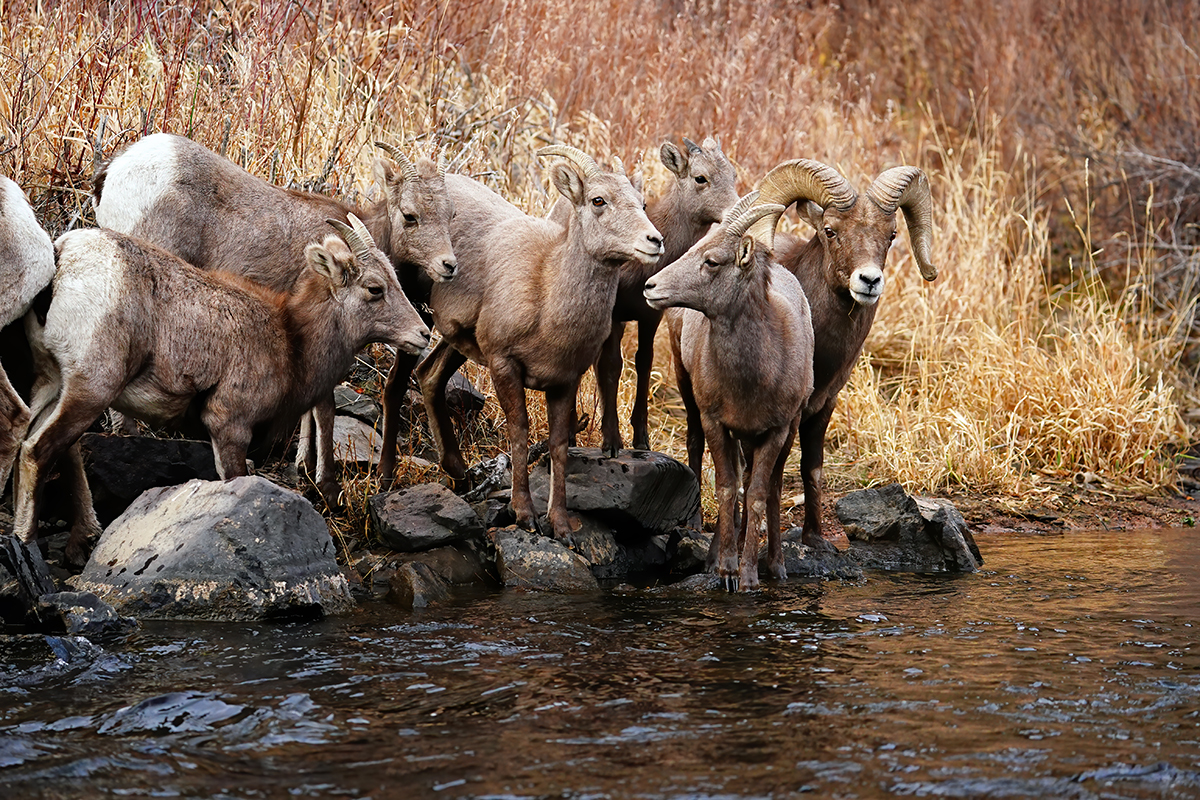
Um passeio memorável demonstrou perfeitamente como a lente certa é vital. Meu alvo era uma conhecida área de invernada de ovelhas Bighorn no Colorado, acessível apenas por meio de caminhadas ou mountain bike. Naturalmente, levei a Tamron 150-500 mm porque seu formato leve tornava o passeio de bicicleta mais fácil. Quando localizei o rebanho, o alcance do zoom me permitiu capturar belas imagens sem alarmar os animais.
Dicas rápidas para encontros com a vida selvagem:
- Escolha equipamentos leves para locais remotos.
- Use o zoom para se manter distante e evitar perturbar a vida selvagem.
- Observe os momentos em que os animais levantam a cabeça ou se separam para obter composições mais fortes.
DICA 2: Dominando a antecipação: Capturando movimento e ação
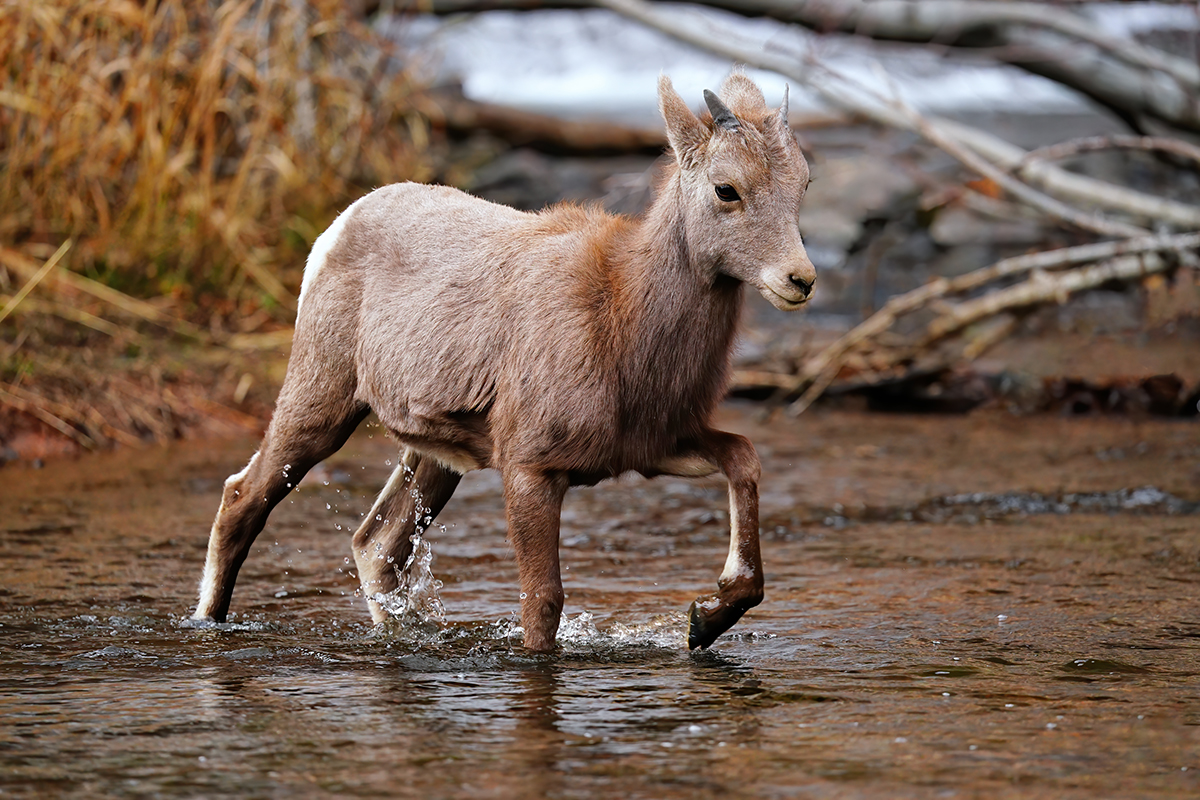
Na fotografia da vida selvagem, o momento certo é tudo. Depois de fotografar o rebanho de ovelhas Bighorn, esperei pacientemente e antecipei seu comportamento. Quando elas atravessaram um rio, uma a uma, eu estava pronto para congelar o momento perfeito com uma velocidade rápida do obturador e o foco automático responsivo da lente Tamron.
Fundamentos da fotografia de ação:
- Sempre antecipe o próximo movimento do sujeito.
- Use velocidades rápidas do obturador para congelar a ação de forma limpa.
- Concentre-se em capturar o movimento natural e a separação entre os animais.
DICA 3: Abaixe-se: um divisor de águas na fotografia de pássaros
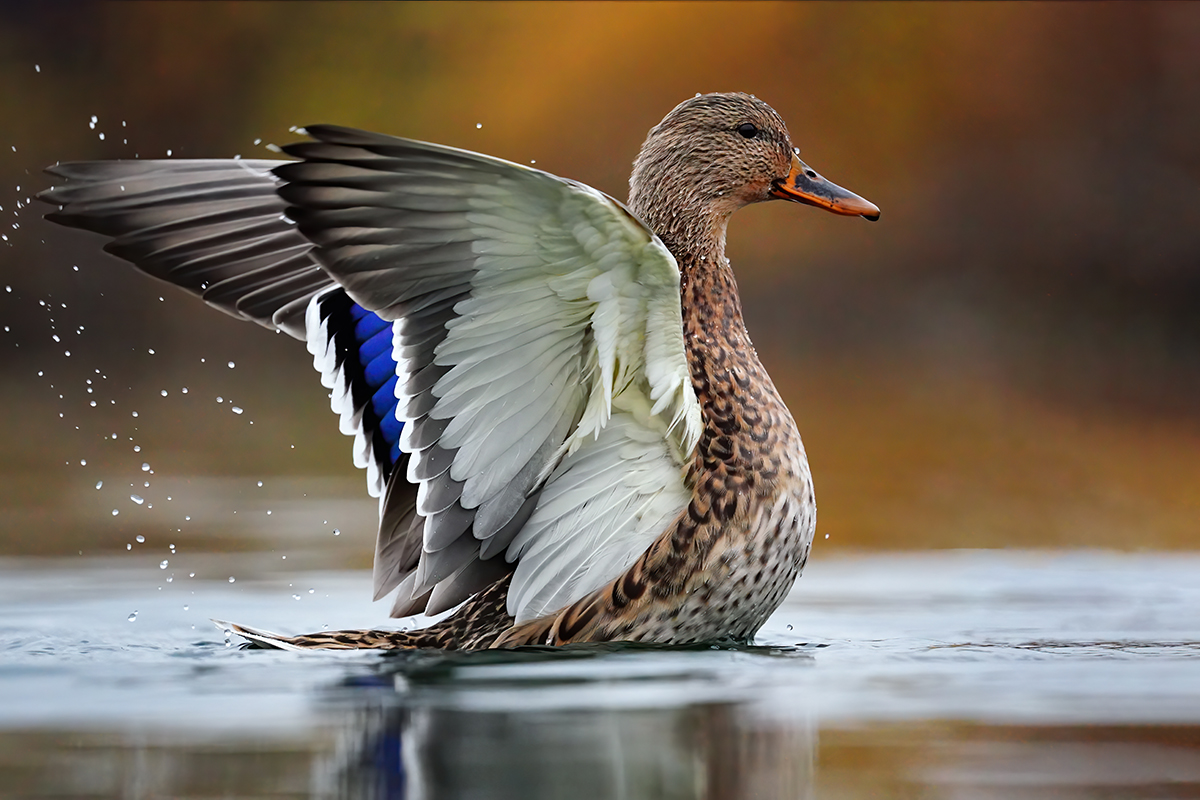
Para fotografar aves aquáticas, como patos, o segredo é chegar ao nível dos olhos do objeto. Eu uso a tela flip-out da minha câmera Sony e a coloco em um suporte no chão ou na minha perna estendida enquanto estou sentado à beira do lago. Graças à leve Tamron 150-500 mm, essa abordagem é mais fácil e confortável.
Em minhas duas imagens de patos (acima e abaixo), o fato de me abaixar criou perspectivas íntimas e fundos impressionantes cheios de cores de outono.
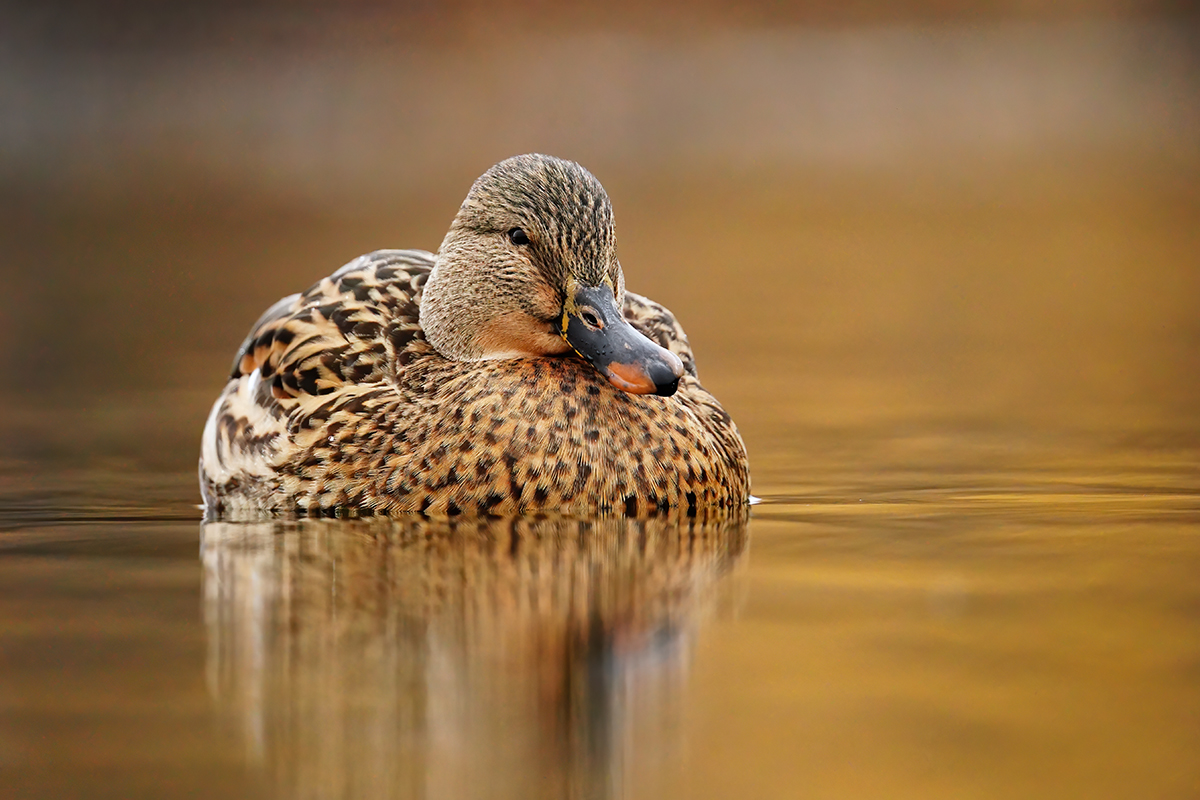
Dicas rápidas para fotografia em ângulo baixo:
- Sempre fotografe no nível dos olhos da pessoa.
- Use um casulo no chão ou sente-se em uma posição baixa no chão.
- Utilize planos de fundo coloridos para aumentar o apelo da imagem.
DICA 4: Cronometre suas fotos da vida selvagem de acordo com o calendário da natureza
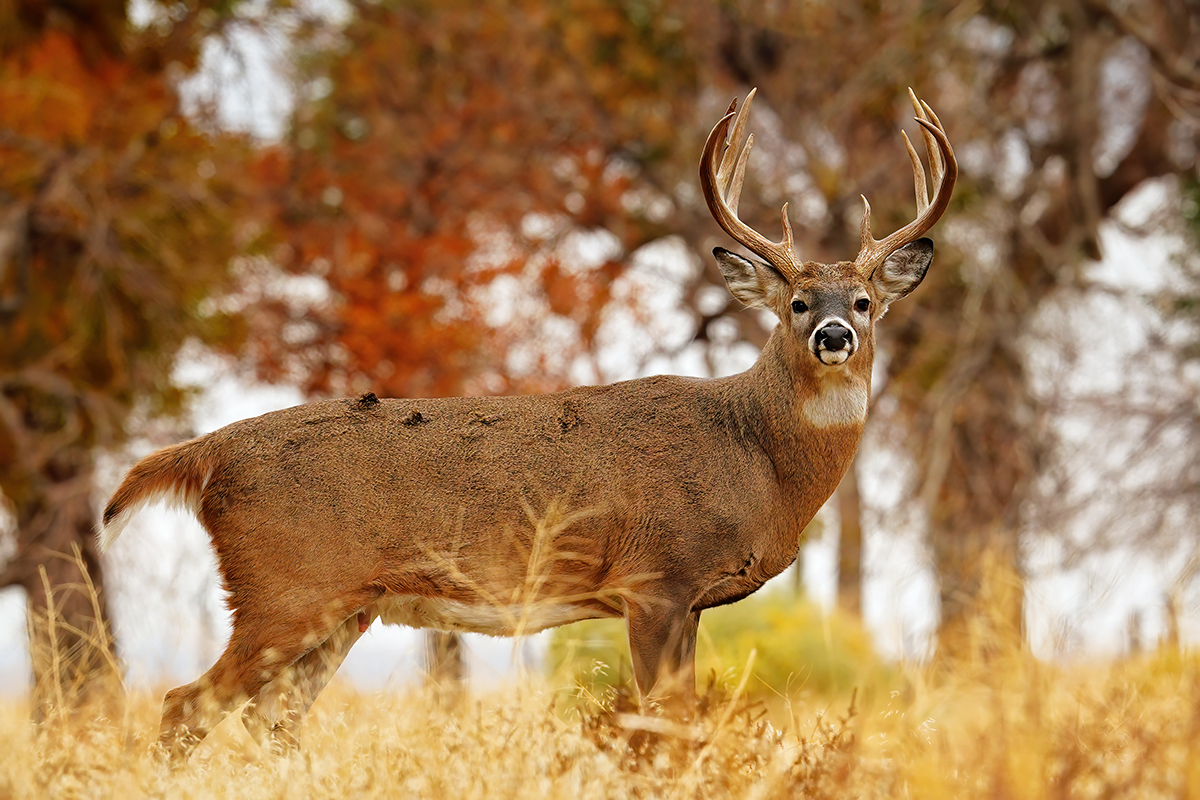
Outro aspecto crucial das dicas para fotografia da vida selvagem com a Tamron 150-500 mm é fotografar tendo em mente as estações do ano. Por exemplo, os impressionantes cervos Whitetail em ótimas condições aparecem durante o cio do outono, o que torna o outono o momento perfeito para fotografar os majestosos machos.
Costumo usar meu veículo como uma cortina móvel, dirigindo por refúgios de vida selvagem. O zoom versátil da Tamron 150-500 mm me permite reagir instantaneamente às cenas, ajustando meu enquadramento sem precisar sair do carro e correr o risco de assustar os animais.
Dicas sazonais de fotografia da vida selvagem:
- A primavera é ideal para fotografar animais bebês.
- O outono é melhor para capturar machos fortes e saudáveis.
- Use seu veículo de forma criativa como uma cortina para minimizar a perturbação.
DICA 5: Espécies comuns também podem brilhar
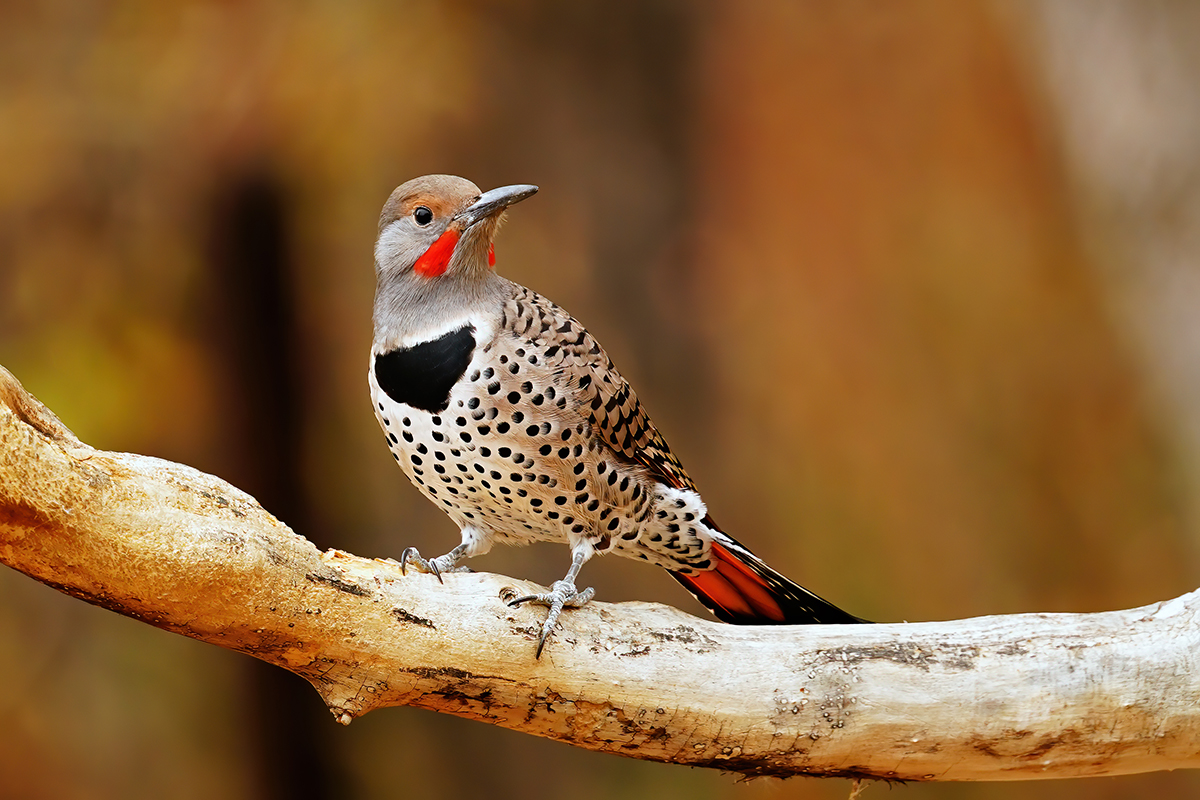
Nem toda imagem premiada precisa de um animal raro. Até mesmo espécies comuns, como o pica-pau-do-norte (acima) e os esquilos (abaixo), podem render fotos impressionantes se você aplicar as principais técnicas de fotografia. Usando a Tamron 150-500 mm, capturei detalhes incríveis de penas em um Flicker e um retrato encantador de um esquilo no meio do caminho. O posicionamento cuidadoso da câmera e o controle do plano de fundo fizeram toda a diferença.
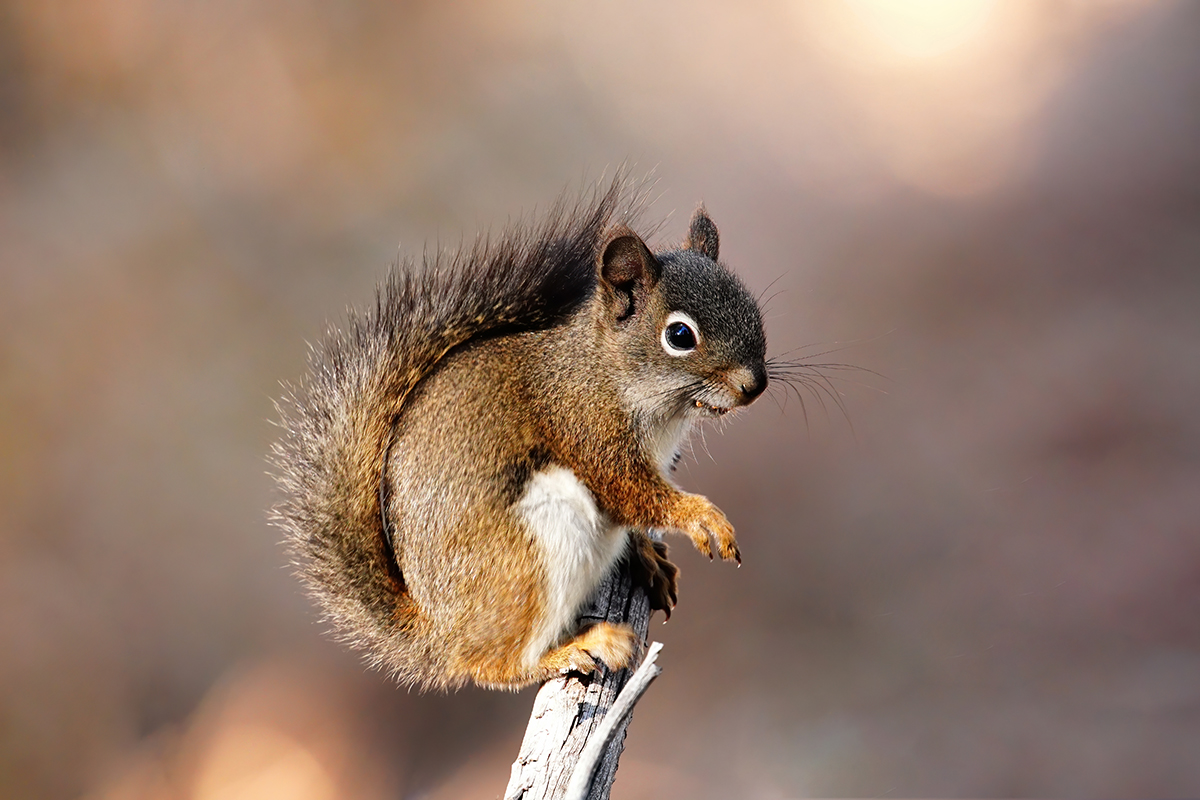
Dicas para fotografar a vida selvagem comum:
- Procure poses interessantes e contato visual direto.
- Concentre-se na separação do fundo para obter fotos limpas e com bokeh.
- Trate todos os assuntos, por mais comuns que sejam, com o mesmo cuidado e paciência.
Considerações finais: Por que a Tamron 150-500 mm é minha lente ideal para a vida selvagem
Depois de anos como fotógrafo profissional e líder de excursões fotográficas, posso dizer com confiança que a Tamron 150-500 mm oferece consistentemente o desempenho necessário para imagens excepcionais da vida selvagem.
Em meu corpo full-frame Sony ou APS-C (onde ela se torna equivalente a 225-750 mm!), ela oferece:
- Foco extremamente rápido
- Detalhes nítidos
- Ergonomia confortável para longos dias no campo
Com essas dicas para a fotografia da vida selvagem com a Tamron 150-500 mm, espero que você se sinta inspirado a sair para o ar livre e capturar seus próprios momentos inesquecíveis da vida selvagem. A primavera está chegando - e com ela vêm os bebês animais esperando para serem fotografados!
Saiba mais sobre fotografia da vida selvagem na edição 14 da revista TAMRON. Para saber mais sobre a Tamron 150-500 mm disponível para câmeras mirrorless Sony E-mount, Fujifilm X-mount e Nikon Z-mount, encontre um revendedores autorizados Tamron em sua área ou visite o site Loja TAMRON hoje.
Para ver mais do trabalho de Don Mammoser, visite seu site site, YouTube ou Instagram.